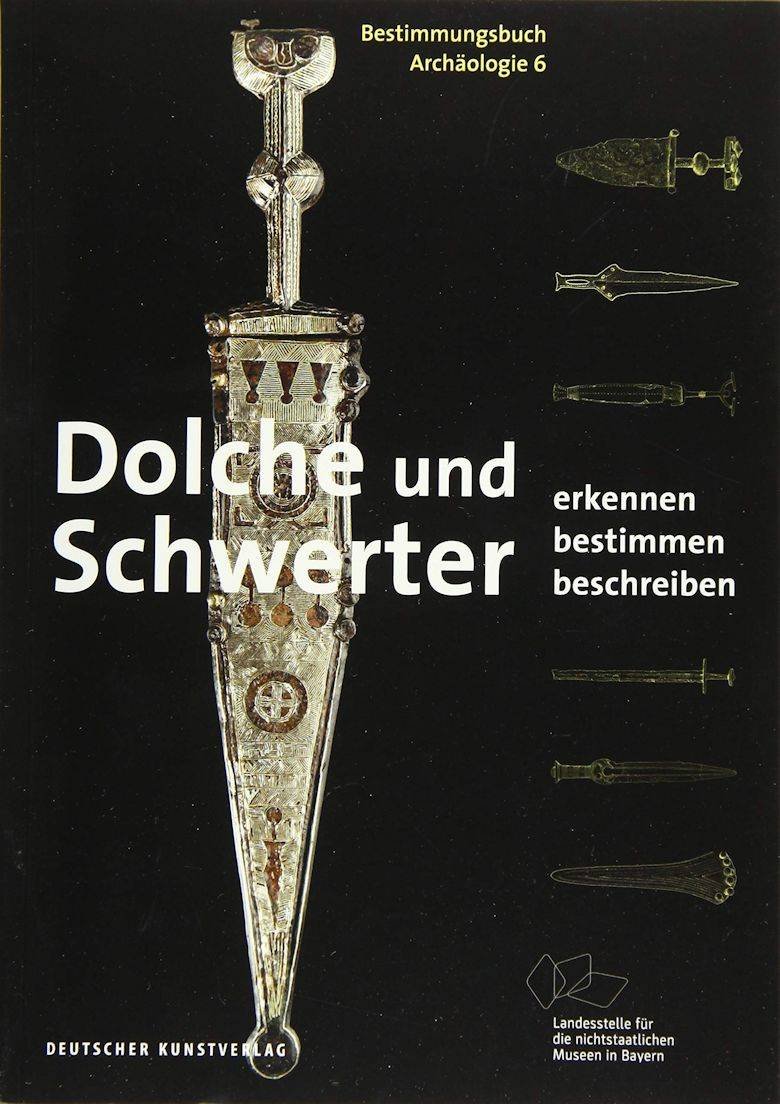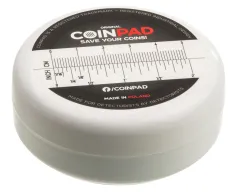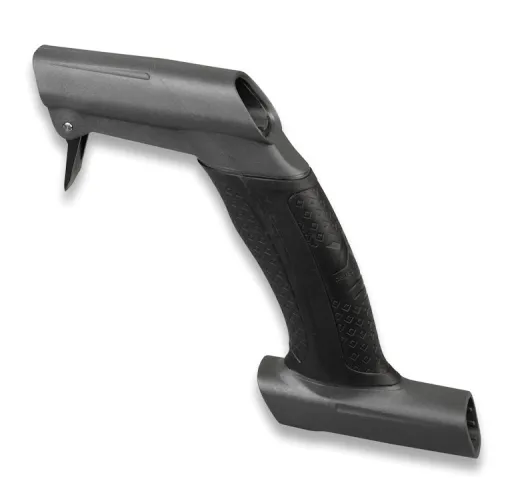Products description
Updated, latest edition.
Recognise. Identify. Describe. Author Ulrike Weller
Published by the State Office for Non-State Museums in Bavaria, Archaeological State Museum Baden-Württemberg, LVR-LandesMuseum Bonn, Archaeological Museum Hamburg, State Office for Archaeology Saxony, Lower Saxony State Museum Hanover, Museums Weißenburg/City of Weißenburg in Bavaria.
Bestimmungsbuch Archäologie Volume 6.
As offensive weapons, the shape of daggers and swords is primarily characterised by the fighting style. But they were also always status symbols. Elaborately designed with precious materials, they represented the self-image of warriors and army commanders. This is demonstrated by Neolithic fishtail daggers of outstanding craftsmanship as well as splendidly decorated Frankish gold-handled spathes.
Volume 6 of the successful series is dedicated for the first time to one type of weapon and presents a cross-epochal classification of "daggers and swords". The spectrum ranges from Neolithic flint daggers to Viking iron swords from the period around 1000, and for the first time prehistoric, Roman and early medieval forms are summarised in a common classification.Details
- 312 pages, 17 x 24cm
- Colour plates and b/w sketches
- Chronological overview
- Swords
- Sword blade, hilt plate sword, hilt pole sword
- Full hilt sword, octagonal sword, Nordic full hilt sword
- Disc pommel sword, scabbard pommel sword, aerial pommel sword
- Horn pommel sword, kidney pommel sword, round pommel sword, saddle pommel sword
- Double plate pommel sword, full hilt sword with anthropoid grip
- Burl pommel sword
- Roman parade sword
- Ort bands
- Various flap location bands
- Various rail type bands
- Groin sword band div.
- Literature
- Detailed directories
Included in the scope of delivery
Identification book Daggers and Swords Archaeology Volume 6
Product video
Customers who bought this product also bought the following products:
Take a closer look at your find and recognise the details better. The new XP pocket magnifier fits in any trouser pocket, rucksack or Fundtaschen. The 3x and 6x magnification of the magnifying glass makes it easier to recognise the details of the coin/find and helps to identify the find. 9,95 EUR19 % VAT incl.The multifunctional find brush is a must-have for every explorer! You can easily attach this tool to your rucksack, search bag, trousers, holster or belt using the snap hook. This way you always have it close to you and can't lose it in the field. The drawstring (cord) can be pulled out to a leng... 12,95 EUR19 % VAT incl.BESTSELLER! Coinpad normal, 35mm - The Coinpad is the ideal companion when searching in the field to protect small finds such as coins, jewellery, etc. Simply moisten the inner pad with water, then insert the coins one after the other into the 11 slots. Depending on the diameter, there ... Our previous price 5,99 EUR Now only 4,49 EURyou save 25% / 1,50 EUR19 % VAT incl.
Diesen Artikel teilen:
Kontakt
Beratung
Professionelle & kompetente Metalldetektoren-Beratung für Einsteiger & Fortgeschrittene
Mo.- Fr.: 9:00 - 16.00 UhrBestellung
Deinen Metalldetektor jetzt telefonisch bestellen und schnellen Versand sichern: +49 173 870 70 75 Services
Reparaturservice
Technische Beratung
Inzahlungsnahme
Finanzierungen

Recognise. Identify. Describe. Author Ulrike Weller
Published by the State Office for Non-State Museums in Bavaria, Archaeological State Museum Baden-Württemberg, LVR-LandesMuseum Bonn, Archaeological Museum Hamburg, State Office for Archaeology Saxony, Lower Saxony State Museum Hanover, Museums Weißenburg/City of Weißenburg in Bavaria.
Bestimmungsbuch Archäologie Volume 6.
As offensive weapons, the shape of daggers and swords is primarily characterised by the fighting style. But they were also always status symbols. Elaborately designed with precious materials, they represented the self-image of warriors and army commanders. This is demonstrated by Neolithic fishtail daggers of outstanding craftsmanship as well as splendidly decorated Frankish gold-handled spathes.
Volume 6 of the successful series is dedicated for the first time to one type of weapon and presents a cross-epochal classification of "daggers and swords". The spectrum ranges from Neolithic flint daggers to Viking iron swords from the period around 1000, and for the first time prehistoric, Roman and early medieval forms are summarised in a common classification.
Details
- 312 pages, 17 x 24cm
- Colour plates and b/w sketches
- Chronological overview
- Swords
- Sword blade, hilt plate sword, hilt pole sword
- Full hilt sword, octagonal sword, Nordic full hilt sword
- Disc pommel sword, scabbard pommel sword, aerial pommel sword
- Horn pommel sword, kidney pommel sword, round pommel sword, saddle pommel sword
- Double plate pommel sword, full hilt sword with anthropoid grip
- Burl pommel sword
- Roman parade sword
- Ort bands
- Various flap location bands
- Various rail type bands
- Groin sword band div.
- Literature
- Detailed directories
Included in the scope of delivery
Identification book Daggers and Swords Archaeology Volume 6
Product video
Take a closer look at your find and recognise the details better. The new XP pocket magnifier fits in any trouser pocket, rucksack or Fundtaschen. The 3x and 6x magnification of the magnifying glass makes it easier to recognise the details of the coin/find and helps to identify the find.
9,95 EUR
19 % VAT incl.
The multifunctional find brush is a must-have for every explorer! You can easily attach this tool to your rucksack, search bag, trousers, holster or belt using the snap hook. This way you always have it close to you and can't lose it in the field. The drawstring (cord) can be pulled out to a leng...
12,95 EUR
19 % VAT incl.
BESTSELLER! Coinpad normal, 35mm - The Coinpad is the ideal companion when searching in the field to protect small finds such as coins, jewellery, etc. Simply moisten the inner pad with water, then insert the coins one after the other into the 11 slots. Depending on the diameter, there ...
Our previous price 5,99 EUR Now only 4,49 EURyou save 25% / 1,50 EUR
19 % VAT incl.
Kontakt
Beratung
Professionelle & kompetente Metalldetektoren-Beratung für Einsteiger & Fortgeschrittene
Mo.- Fr.: 9:00 - 16.00 Uhr
Professionelle & kompetente Metalldetektoren-Beratung für Einsteiger & Fortgeschrittene
Mo.- Fr.: 9:00 - 16.00 Uhr
Bestellung
Deinen Metalldetektor jetzt telefonisch bestellen und schnellen Versand sichern: +49 173 870 70 75
Deinen Metalldetektor jetzt telefonisch bestellen und schnellen Versand sichern: +49 173 870 70 75
Services
Reparaturservice
Technische Beratung
Inzahlungsnahme
Finanzierungen
Reparaturservice
Technische Beratung
Inzahlungsnahme
Finanzierungen
DETEKTOREN & ZUBEHÖR
BEWERTE UNS
Unsere Garantie
Informationen
Hobby Tipps
Welcome back!
Last viewed:
Manufacturer
Buchempfehlungen
Shipping country







